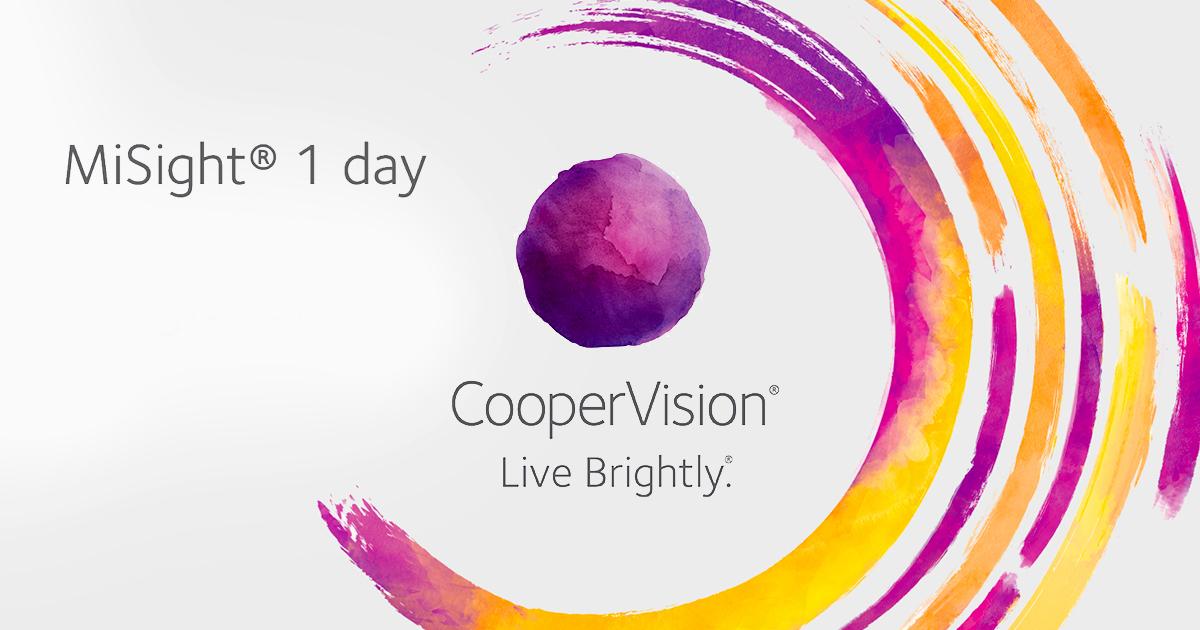Soft CL slows myopia in children

Globally, the myopia market may be worth upwards of $28 billion by 2026, with single prescription corrective lenses holding a significant market share, according to one report. CooperVision’s first contact lens indicated to slow the progression of myopia in children was approved in mid-November and may garner an impressive part of that market share — about 75% of children with myopia are diagnosed between the ages of 3 and 12, according to the American Optometric Association. In the U.S., the National Eye Institute predicted 39 million Americans would be myopic in 2020, a number set to increase to 44.5 million by 2050. A recent estimate suggests that visual impairment among preschool children will increase by 26% by 2060 with uncorrected refractive error comprising 69% of cases. 1
CooperVision’s MiSight is a single-use, disposable, soft contact lens approved to slow the progression of myopia in children between the ages of 8 and 12 years. The potential market size runs in the millions. A cross-sectional study of more than 60,000 young people (5- to 19-years old) enrolled in the Kaiser Permanente Southern California health plan showed myopia of at least a diopter in 14.8% of 5- to 7-year-olds, increasing to 59.0% of 17- to 19-year-olds. Asian/Pacific Islander children had an increased rate of myopia compared to white children (OR 1.64, CI 1.58-1.70), as did African American children (OR 1.08, CI 1.03-1.13). Higher household income and time spent outdoors were associated with lower prevalence of myopia.
Reducing the progression of myopia “could mean a reduced risk of developing other eye problems,” Malvina Eydelman, MD, director of the FDA’s Office of Ophthalmic, Anesthesia, Respiratory, ENT, and Dental Devices, said in a news release. Among the sight-threatening conditions myopic progression can lead to: glaucoma, retinal detachment, and myopic maculopathy.
According to the FDA, the approval of MiSight was based on data obtained from a prospective clinical trial at four clinical sites and real-world evidence. The safety and effectiveness of MiSight was studied in a 3-year randomized, controlled clinical trial of 135 children ages 8 to 12 at the start of treatment who used MiSight or a conventional soft contact lens. The trial showed that for the full 3-year period, the progression in myopia of those wearing MiSight lenses was less than those wearing conventional soft contact lenses. In addition, subjects who used MiSight had less change in the axial length of the eyeball at each annual checkup. Over the course of the trial, there were no serious ocular adverse events in either arm of the study. CooperVision noted use of MiSight 1 day was dually shown to slow myopia progression: 59% as measured by mean cycloplegic spherical equivalent (SE) and 52% as measured by mean axial elongation of the eye.
CooperVision President Daniel G. McBride said, “We can’t overstate the importance and potential impact of this landmark decision on children’s vision, especially considering the rise in myopia’s severity and prevalence in the U.S. and worldwide. Eye care professionals who embrace this breakthrough approach will improve the quality of life and eye health for so many children.”
MiSight contact lenses will launch in the United States as part of a CooperVision “myopia management initiative” beginning in March 2020, the company noted in a press release. The lens is being successfully worn by thousands of myopic children in Canada, the United Kingdom, Spain, and Australia, where age ranges for initial fitting may vary. Adding to the accolades, the British Contact Lens Association named the MiSight “one of the most innovative developments in eye health.”
There are four treatments being studied as a means to control or slow the progression of myopia, including atropine eye drops, multifocal contact lenses, orthokeratology, and multifocal eyeglasses. While those methods have demonstrated experimental success in studies around the world, none spawned an FDA-approved drug or device for controlling myopia.
The Contact Lens Manufacturers Association (CLMA) acknowledges that “[s]everal studies have found that although standard gas permeable lenses worn by some children may result in less myopia progression than wearing soft lenses or glasses, they have no effect on slowing eye growth.
“Contact lenses used to slow or stop myopia progression — typically overnight orthokeratology, and to a lesser extent, special-design soft lenses — can focus light on the back of the eye (the retina) in a way that signals the eye to slow or stop its lengthening process,” the CLMA says.
Reference:
1. Varma R, Tarczy-Hornoch K, Jiang X. Visual Impairment in Preschool Children in the United States: Demographic and Geographic Variations from 2015 to 2060.
JAMA Ophthalmol 2017;135:610-616.
